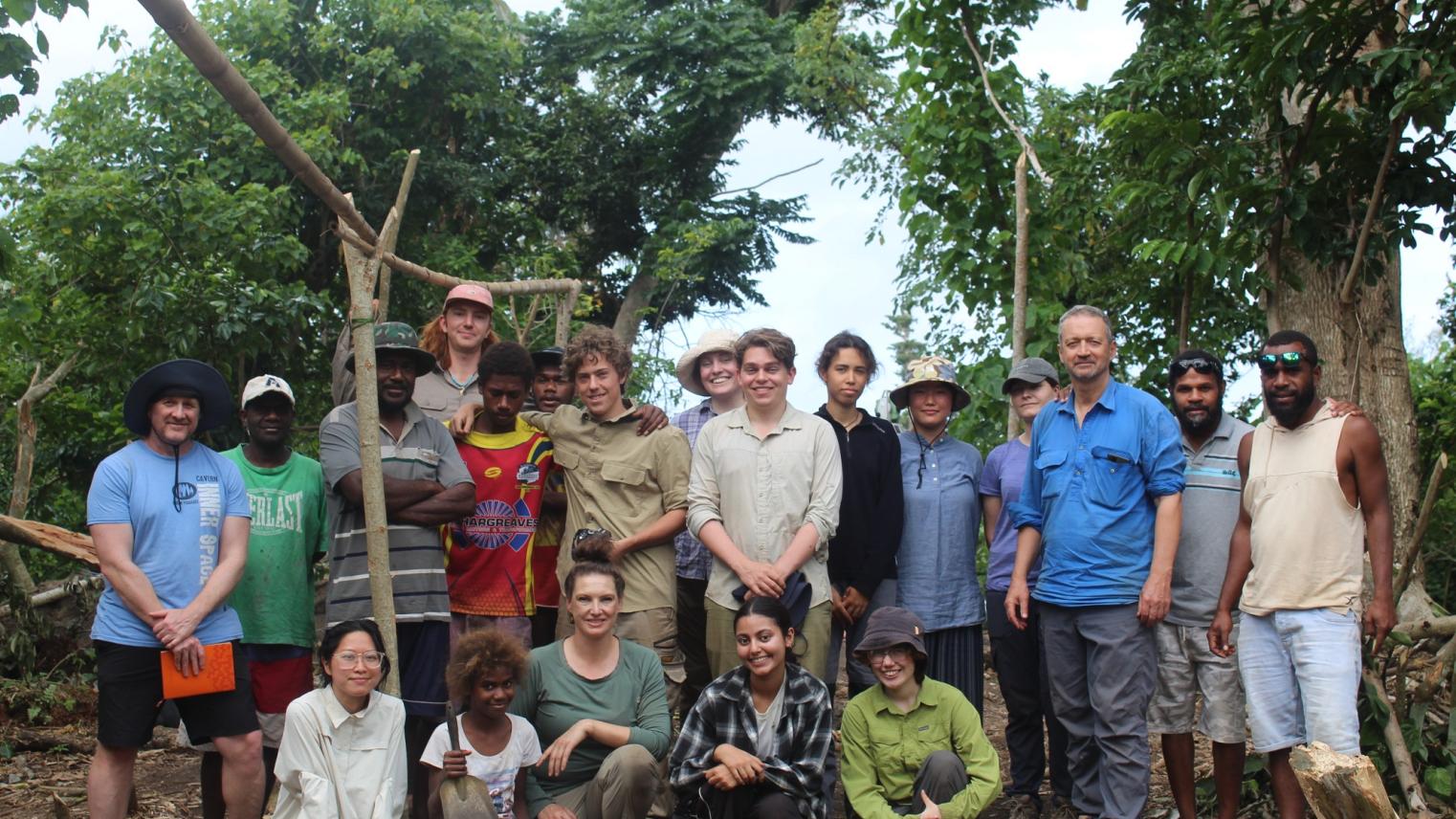A 3,000-year history uncovered: ANU Vanuatu Field School 2023, Pangpang, Efate Island

It’s not often that students get to experience cultural immersion, local community celebration, and professional onsite experience all in one package. That’s why ANU students participating in the annual ANU-Vanuatu Cultural Centre (VCC) Field School this year were particularly fortunate, as they not only had the opportunity to participate in the investigations of such an important site, but the field school also coincided with the Melanesian Arts Festival being held in the capital Port Vila.
Flashback to Preparation
In July 2023, the annual ANU-Vanuatu Cultural Centre (VCC) Field School took place at Pangpang, on the east coast of Efate Island. It was a site that staff of the VCC had identified in 2022 through surface survey and preliminary excavation. They confirmed that Lapita pottery was present, the style associated with first arrival in the region 3,000 years ago, along with later pottery styles that indicated settlement across the valley over a 1,600-year period. Planning for a larger investigation began, and the 2023 ANU Vanuatu Field School was a part of the research team that assembled in July.
Coordinated by CHL’s Associate Professor Stuart Bedford, along with colleagues from the Vanuatu Cultural Centre, Iarawai Phillip, Lucas Sarvanu and Edson Willie, the excavation continued over a three-week period. Other specialists who joined the 16 ANU students included Drs Frédérique Valentin (CNRS, France) and Stuart Hawkins (ANU). Robert Henderson an ANU PhD student ran the on-site analytical station.
As outlined by Bedford the identified sites and location turned out to be components of an extraordinary cultural landscape:
Initial visits to the area with my VCC colleagues suggested that it was a very special archaeological and cultural landscape. Midden (rubbish) mound features located on the uplifted riverbanks were remarkably well-preserved, and appeared to comprise largely of material dating to the first 500 years of settlement. Later survey indicated that the entire valley showed signs of settlement and use with the late Mangaasi-style pottery being found kilometres inland.
The July excavations focused on the sites near the river, where the earliest occupation was in evidence. The significance of the site was confirmed very quickly, with bones of extinct species being identified along with exotic volcanic glass (obsidian from New Guinea), indicating that it was a location of first arrival in this part of the island. As faunal specialist and former CHL researcher Stuart Hawkins observed,
The extinct tortoise bone being recovered already, from a relatively small area of excavation, suggests that this site will potentially rank amongst one the most important in the region for understanding initial human impact on pristine environments.

Summing up Bedford noted:
One of the highlights for the students is of course the archaeology, but having coordinated these field schools over many years in different locations in Vanuatu, I realise that it is equally the cultural experience that is a highlight, living and working with local communities. The Pangpang community who housed and fed us and joined the excavations were really wonderfully supportive and embraced the student cohort.
Roll on 2024 for the next chapter of ANU archaeological engagement and discovery with Vanuatu!